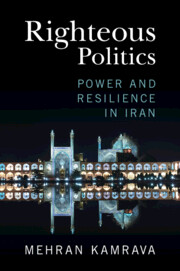Book contents
- Righteous Politics
- Righteous Politics
- Copyright page
- Contents
- Tables
- Preface
- 1 Introduction
- 2 Authoritarian Perseverance
- 3 Ruling under Stress
- 4 The Constitution, Elections, and Legitimacy
- 5 Elected Institutions
- 6 The Unelected Leadership
- 7 The Praetorians
- 8 Maintaining the System
- 9 The Deep State
- 10 Intra-elite Dynamics
- 11 The State and Its Riches
- 12 Conclusion
- Appendix
- Select Bibliography
- Index
- References
Select Bibliography
Published online by Cambridge University Press: 10 August 2023
- Righteous Politics
- Righteous Politics
- Copyright page
- Contents
- Tables
- Preface
- 1 Introduction
- 2 Authoritarian Perseverance
- 3 Ruling under Stress
- 4 The Constitution, Elections, and Legitimacy
- 5 Elected Institutions
- 6 The Unelected Leadership
- 7 The Praetorians
- 8 Maintaining the System
- 9 The Deep State
- 10 Intra-elite Dynamics
- 11 The State and Its Riches
- 12 Conclusion
- Appendix
- Select Bibliography
- Index
- References
Summary

- Type
- Chapter
- Information
- Righteous PoliticsPower and Resilience in Iran, pp. 347 - 376Publisher: Cambridge University PressPrint publication year: 2023

